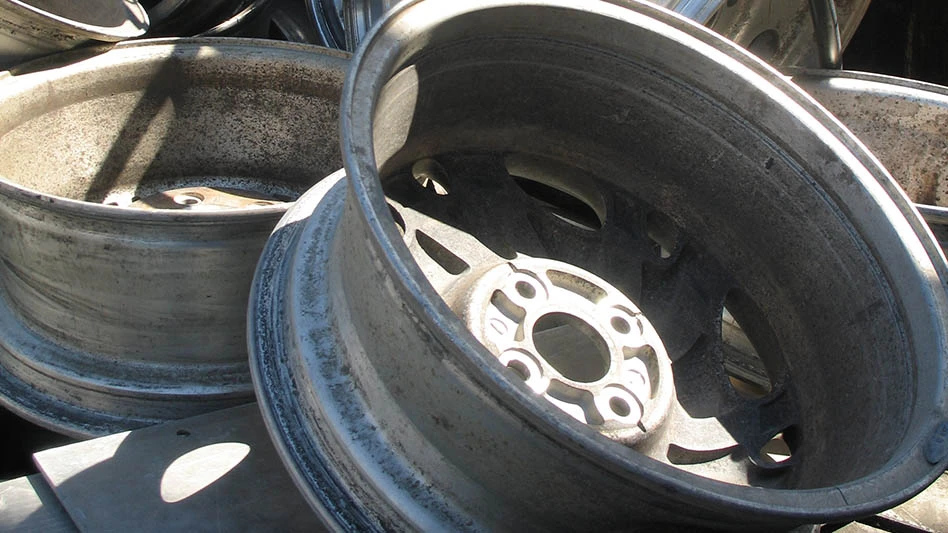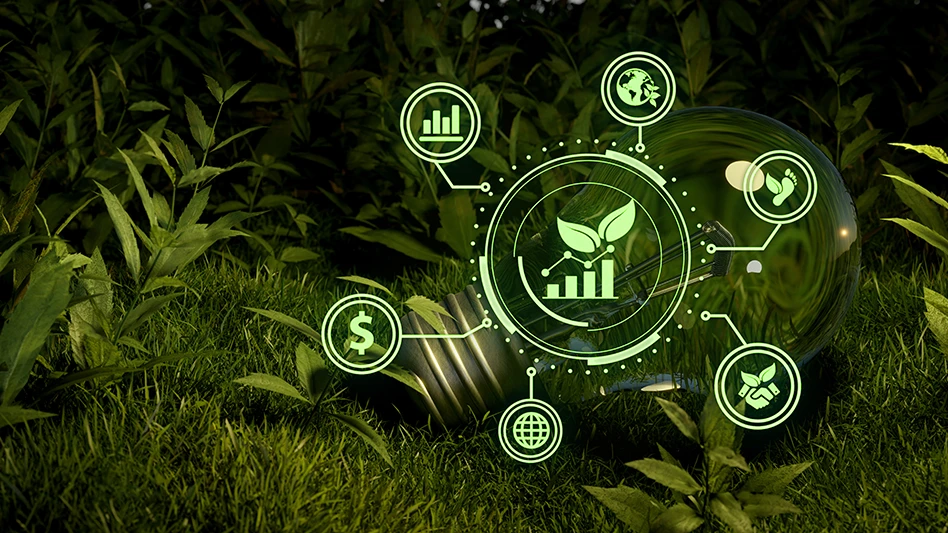 Rigid plastic packaging has grown at the expense of traditional packaging, such as glass bottles and jars, and metal cans, for a variety of reasons, including lighter weight, lower comparative cost, design flexibility and ease of recycling, according to Smithers Pira, a market research and consulting firm serving the packaging, paper and print industry supply chains.
Rigid plastic packaging has grown at the expense of traditional packaging, such as glass bottles and jars, and metal cans, for a variety of reasons, including lighter weight, lower comparative cost, design flexibility and ease of recycling, according to Smithers Pira, a market research and consulting firm serving the packaging, paper and print industry supply chains.
However, brand owners and retailers are responding to public pressure to reduce the environmental impact of plastic packaging, Smithers Pira says. This has led brand owners and packaging designers to reduce the weight of packaging and to use materials that are either biodegradable or derived from sustainable sources.
Optimizing the environmental footprint of plastic packaging often begins with lightweighting.
Reducing weight
For years, “lightweighting” has been a key consideration in packaging. All brand owners wanted to lightweight, and so they sought out thinner walls for their plastic bottles and aluminum cans, as well as different materials to help reduce the weight of their packaging.
“There is a continued push for lightweighting for cost savings and sustainability,” says Todd Bukowski, senior packaging consultant for the Packaging Technology Integrated Solutions division at HAVI Global Solutions, Downers Grove, Illinois. “But that is topping out.”
Today’s packaging producers and brand owners see package design as more important—the shape of the package and features like pumps that meter product use, he adds.
“Lightweighting has slowed but continues where it can be achieved without sacrificing consumer needs or product safety and performance,” says Kate Eagles, program director for the National Association for PET Container Resources (NAPCOR), Florence, Kentucky. “Rightsizing is being seen in many beverage applications, giving consumers an ‘on the go’ or ‘just enough’ style serving size,” she adds.
Lightweighting of packaging for water and carbonated soft drinks has slowed, with packaging for specialty beverages having the most potential for lightweighting moving forward. The general trend over next few years has been toward lighter weight and smaller bottle sizes, she adds.
“You end up with more but smaller packages on the shelf,” Scott Saunders, general manager at KW Plastics, Troy, Alabama, says of lightweighting. “Where you had 10 packages taking up 10 feet of space, now they take up only 8 feet.” The store, however, does not leave that extra space empty. “They fill them with something … something in a package,” he says.
Saunders says he would like to see more emphasis on preconsumer savings that can be realized with plastics packaging. “Think about the shipping savings in weight on a truckload of soda in plastic versus glass bottles,” he says. That’s why he works with the Association of Plastics Recyclers (formerly the Association of Postconsumer Plastics Recyclers, APR), Washington, to promote plastics as an environmental solution rather than as a problem.
New packaging materials that use plastics can create challenges for material recovery facility (MRF) operators, however.
“Inside the MRF, plastics don’t always behave the way we want them to,” says Will Herzog, regional business development, ReCommunity, Charlotte, North Carolina. Flexible plastic packaging tends to behave more like soft cardboard or envelopes and ends up in the wrong places. Optical sorters at MRFs may not always perform optimally in light of this.
“As marketers get more creative with packaging, it gets more difficult to communicate back to residents about what they can use to fill our bins.”
He says he sees a continued trend toward material diversity as opposed to a narrowing of the various plastics and composite materials used in packaging.
A growing variety
Almost every source contacted for this article is bullish on the future of plastics versus that of other packaging materials. “We will see a broader variety of plastics, rigid plastics, softer films and detergents in pouches,” Herzog predicts.
Economic concerns
Plunging oil prices make hauling cheaper. But, because plastic production is heavily oil-dependent, the price of virgin material could become cheaper than recycled as a result of the downturn.
PET (polyethylene terephthalate), already under downward pressure (see “Strange but Steady in the August issue of Recycling Today at www.recyclingtoday.com/article/rt0815-plastics-PET-market-focus) from an oversupply of prime resin, faces a double-whammy.
“Everyone is worried about the commodity bubble deflating,” Neil Gloger, CEO of Euclid, Ohio-based InterGroup International, says, noting that oil in late August was hovering at levels less than 12 percent above recession lows. That will translate to prime plastic material costing less than recycled plastics of all sorts.
Some generators are shopping their materials, hoping to find someone who will pay higher prices for their plastic. “Generators want more for their scrap. But the market is going down, and now is not the time to switch [vendors],” Gloger says.
Scott Saunders, general manager at KW Plastics, Troy, Alabama, says he sees the same thing, especially in the contraction in timing of orders. “Total volume is down a small amount. But the forward view we used to have when markets were stable has gone,” he says. He expected PP, which has a major link to oil prices, to be unstable. A bit more surprising is the effect the markets had on PE, which is more closely linked to natural gas.
“Companies are only buying what they need to have,” Saunders says. He figures the situation will persist for several months with orders restricted to 30 days rather than 60 to 90. “They’re thinking, ‘I can buy at 50 tomorrow versus 60 today,” he says.
Gloger says the Chinese export market is between a state of having problems and being locked up. India, he worries, is headed in the same direction, although not as rapidly. Bukowski notes that India may follow China’s Green Fence direction, tightening overseas markets.
Oil is cheap and getting cheaper. The polypropylene (PP) market did not fall in late spring as usual but it will drop, Gloger says. He sees PET on life support.
“Polypropylene and polyethylene are at or near lows,” Gloger says. “The good news is that stuff is moving. But unless demand kicks in, there will not be enough pennies to spread around. The fortunate few who see this coming can still make money,” he adds.
However, some plastics are gaining market share at the expense of others, according to Smithers Pira. Polyvinyl chloride (PVC) now is a minor polymer for rigid plastic packaging, having lost ground to polypropylene (PP), as have PS (polystyrene) and EPS (expanded polystryrene).
PET (polyethylene terephthalate), on the other hand, has overtaken PE (polyethylene) as the leading polymer for rigid packaging overall, accounting for a projected share of just over one-third of world rigid plastic packaging market consumption in 2013, the company adds.
PP also is growing its market share, as are biopolymers, Smithers Pira says.
Biobased solutions
The industry still is sorting out packaging made from compostable, biodegradable and biobased plastics.
Compostable plastics are the easiest to understand, Bukowski says. According to the ASTM D6400 standard, which covers plastics and products made from plastics that are designed to be composted in municipal and industrial aerobic composting facilities, this material must break down within a specific time frame.
No standards are available currently for the performance of degradable and biodegradable plastics in disposal environments other than composting, however, according to EPI Environmental Technologies Inc., the Vancouver-based developer, licensor and distributor of Totally Degradable Plastic Additives.
Biobased packaging looks to replace petroleum-based materials. Tetra Pak’s sugarcane-based packaging is one example. Its LightCap 30 carton cap is made from HDPE (high-density polyethylene) derived from sugar cane.
Bukowski sees great growth in bio-based packaging and says he expects to see growth in compostable applications as green brands push uses like cup liners in food service packaging.
On the issue of additives that promote the degradation of plastic packaging, Eagles says NAPCOR does not support this trend. “We have not seen sufficient data to show ‘no harm’ to recycled PET products made from degradable-additive-containing recycled PET,” Eagles says. “Also, our preferred end of life for plastics such as PET is to capture the inherent energy imbedded in PET packaging through recycling—as opposed to degradation, which generates greenhouse gases.
“Recycled PET is a valuable raw material and should be utilized as such,” she adds.
Considering end of life
Even though Euclid, Ohio-based InterGroup International has a reputation as a multilayer film recycler, CEO Neil Gloger says the company rarely is approached at the packaging design stage about possible postindustrial recycling features of resins or the pairing of one polymer with another. “In most cases, we enter a relationship, receiving materials and working with what it is,” he says.
On the other hand, KW Plastics’ Saunders works closely with big box stores to select environmentally friendly packaging. “Retailers are concerned about public opinion and negative blogging,” he says. “They think about the general public’s opinions filtering back about environmentally friendly packaging.”
HAVI’s Bukowski agrees. “Companies need to be aware of what is inside all of their packaging, including coatings and adhesives,” he says. “Suddenly, packaging is a social media issue.”
He adds, “Recycling is what most often comes to mind for the consumer when asked about packaging.”
However, “As an industry, we’ve done a poor job of education,” Bukowski says of packaging recycling.
He says he wants education to go beyond the Nos. 1-7 resin codes, preferring to see a “how to recycle” label that defines each component like the cap, pouch and exterior box. (For an article on the How2Recycle Label developed by GreenBlue’s Sustainable Packaging Coalition, see www.RecyclingToday.com/article/rt0515-how2recycle-trends.)
A third-generation recycler, Anthony DiIenno, president of Recycling & Waste Solutions at HAVI Global Solutions, is concerned about the impact exotic packaging is having on a system primarily used to recycling PET and HDPE bottles.
And exotic materials in packaging are growing. “There will be no slowdown in the trend to flexible packaging,” Bukowski says.
He says packagers have different metrics for the life cycle assessment phase of package design. Some seek to lower their carbon footprints. Flex packs may accomplish that even if they are landfilled. Others prioritize recycling their packaging.
“We’re seeing a move to a systems approach and green chemistry,” Bukowski says.
NAPCOR encourages innovation combined with an awareness of design for recyclability principles, Eagles says. This ensures that the PET packaging consumers put into their recycling bins is compatible with established infrastructure and processed for remanufactuing into new PET packaging, she says.
PET thermoform packaging is prevalent in the retail grocery sector and in foodservice and big-box retail formats; however, recycling infrastructure for this packaging is not well-established.
“PET thermoforms (clamshells, produce and baked good containers, etc.) are being recycled,” Eagles says, adding that in 2013, more than 60 million pounds of PET thermoforms collected in the U.S. and Canada were recycled.
She concedes, however, that PET thermoforms are not recycled as commonly nor as readily as PET bottles. “NAPCOR is actively engaged in research and technical trials to overcome remaining obstacles,” she says.
While declining secondary commodity prices are affecting MRF operators and plastics reprocessors and recyclers, Eagles says, “We do not downplay some of the challenges but believe that this is also an opportunity for larger discussions about the value of recycling—not simply in monetary terms but in terms of resource use, raw material capture, greenhouse gas emissions, etc.”
Taking this down to the community level, Eagles says, means looking at efficiencies in terms of terminology and consistency of education concerning what is recyclable and the value of recycling, contractual arrangements and innovation with regard to investment in infrastructure, collection and sorting, and end market development.
The author is a Cleveland-based contributing editor to Recycling Today and can be contacted at curt@curtharler.com.

Explore the November 2015 Issue
Check out more from this issue and find your next story to read.
Latest from Recycling Today
- Steer World offers PEX plastic recycling machine
- New recycling grant program launches in Massachusetts
- Tire Recycling Foundation names executive director
- Dock 7 named 2025 Exporter of the Year at New Jersey International Trade Awards
- Waste Connections reports ‘better than expected’ Q1 results
- Commentary: How EPR is transforming the packaging industry
- Acerinox names new North American Stainless CEO
- Greenwave closes 2024 books with red ink





